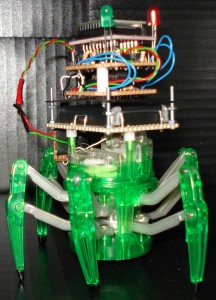I was invited to contribute to a round-table meeting to discuss Computational and Transformational Social Science which took place at the University of Oxford on Monday 18th February. In the background papers for the meeting I learned that the International Panel for the Review of the e-Science Programme, commissioned by the UK Research Councils in 2009, had reported that:
“Social science is on the verge of being transformed … in a way even more fundamental than research in the physical and life sciences”.
It continues in a similarly reasonable vein:
“… the ability to capture vast amounts of data on human interactions in a manner unimaginable from traditional survey data and related processes should, in the near term, transform social science research … (t)he impact of social science on both economic and social policy could be transformed as a result of new abilities to collect and analyse real-time data in far more granular fashion than from survey data.”
In this context, the participants were asked to comment (briefly!) on three questions:
- What is the state of the art in ‘transformative’ digital (social) research?
- Are there examples of transformative potential in the next few years?
- What are the special e-Infrastructural needs of the social science community to achieve that potential?
My first observation about these questions is that they are in the wrong order. Before anything else we need to think about examples where digital research can really start to make a difference. I would assert that such cases are abundant in the spatial domains with which TALISMAN concerns itself. For instance the challenge of monitoring individual movement patterns in real-time, of understanding and simulating the underlying behaviour, and translating this into benefit, such as in policy arenas relating to health, crime or transport.
In relation to the state of the art I am somewhat less sanguine. My notes read that ‘the academic sector is falling behind every day’ – think Tesco Clubcard, Oystercard, SmartSteps, even Twitter as data sets to which our community either lacks access or is in imminent danger of losing access. How do we stay competitive with the groups who own and control these data? In relation to current trends in funding I ask whether it is our destiny to become producers of the researchers but no longer of the research itself?
As regards e-Infrastructure, my views are if anything even more pessimistic. After N years of digital social research in the UK (where N>=10) are there really people who still believe that the provision of even more exaflops of computational capacity is key? While data infrastructure could be of some significance, the people issues remain fundamental here – how do we engage a bigger community in these crucial projects (and why have we failed so abjectly to date?), and how do we fire the imagination of the next generation of researchers to achieve more?

